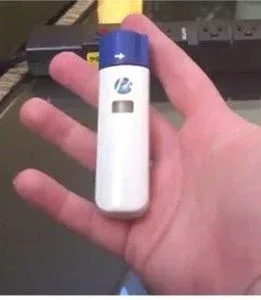At Potomac, we find that helping startups prototype and manufacture new designs in order to bring groundbreaking products to market is especially rewarding work. Our advanced manufacturing collaborations with innovators stretch our capabilities and challenge our own solution-solving skills. Windgap Medical is one such startup with an intriguing product that solves a number of problems for allergy sufferers.
A Better Solution for Allergy Sufferers

Auto-injectors have long been prescribed for anyone who may suffer a life-threatening allergic reaction, or anaphylaxis. Developed by a D.C. firm in the mid-1970’s for military personnel to carry in case of nerve agent exposure, the EpiPen allows the average person to self-inject the prescription medication epinephrine simply by pressing the device against the thigh muscle.
However, the Windgap team recognized several shortcomings in the medical device that they wanted to improve. First of all, in order to take advantage of the emergency treatment, patients must carry the device with them at all times. Compliance is always an issue with prescription drugs and the large, cumbersome EpiPen is often left at home. Kids, who in recent years seem more sensitive to environmental allergens such as peanuts, are especially non-compliant. Given that the auto-injector may never be used in an entire lifetime, carrying the device at all times is a tall order. In addition, the expensive auto-injectors need to be replaced every year as the epinephrine is not stable and has a short shelf life requiring storage at specific temperatures that are not controllable in places such as the playground.

Windgap Medical CEO and Co-founder Christopher Stepanian explains that in addition to reducing the auto-injector’s size, the start up team sought solutions to the medication instability problem. “We had a dual chamber idea for converting the medication into the liquid state when it was time to inject. So we started exploring Mix-On-Demand options and were initially considering using a small microfluidic device inside the auto-injector.” Chris adds, “We had access to equipment at Harvard and could have built the microfluidics prototype ourselves, but we decided time was short and it would be more time-effective to find an outside supplier.
Although Windgap has funding, as for any startup resources are not limitless. “While the saying time is money may be true”, Chris points out that “when you’re in startup mode, money is money. We were lucky to find Potomac who could provide quick turnaround, at a very fair price.” Plus, Windgap gained some important process development experience by using Potomac’s team with microfluidics prototyping experience. In the end, the auto-injector mixing could be done with a less sophisticated solution but rapid prototyping allowed Windgap to quickly make solid R&D decisions. Chris reiterates that “new designs will need higher precision and we look forward to working with Potomac again in the future.”
While Potomac enjoys all the challenging projects we undertake, we’re excited to help an innovative startup get a new product to market that will potentially save lives due to better patient compliance. For more information, check out our economical, quick delivery Fast Track program, designed specifically for microfluidic device prototyping.


